Visit Malta Off-the-Beaten-Path and Off-Season
By Victor Paul Borg
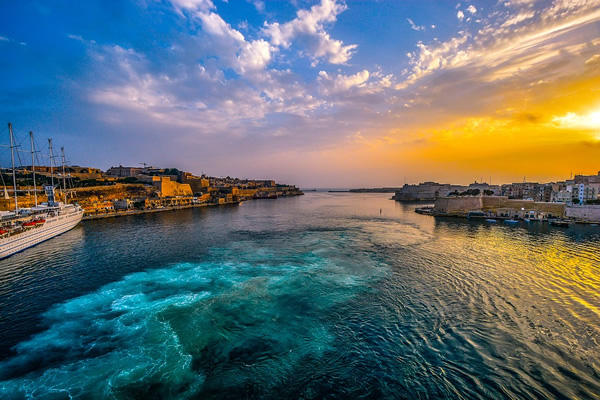
|
|
Harbor in Valletta, Malta.
|
Malta has a bewildering number of famous sights, monuments, and museums, and it is easy to find out about them and visit them. These places also tend to get crowded, particularly in summer high season. But with its eventful 7,000 year old history, Malta is like a huge open air museum that bears witness to a glorious past, and it is much more than the sum of its sights. After visiting the main attractions — and do not try to see them all as you will get exhausted — you can see another aspect of the islands by traveling to less well known and seldom visited areas.
Valletta Backstreets
Valletta is Malta's capital and World Heritage Site. It contains Malta's main sights — including the cathedral, palace, national museums, and so on — but a more complete experience is of the city is found in the backstreets in the northern half of the peninsula on which it is built. These 400-year-old alleyways make for a long and absorbing walks. The houses have lovely wooden balconies and niches. The inhabitants themselves are a quaint sight as they go about their daily chores. There is also a scattering of chapels, all architectural gems. Street corners have larger niches of Catholic saints — the legacy of the original master plan for Valletta, which specified that street corners had to be decorated with Catholic icons. Most interesting is the area on the northwest corner of Valletta. It is called Il-Mandragg, and it is the densest part of the city, with multi-storey apartment blocks towering over narrow alleys, with tunnels cutting through the lower floors of the buildings. Strait Street still bears shop signs that recall its heyday at the turn of the twentieth century — look out for the names of old theaters and girlie bars, now shuttered and crumbling.
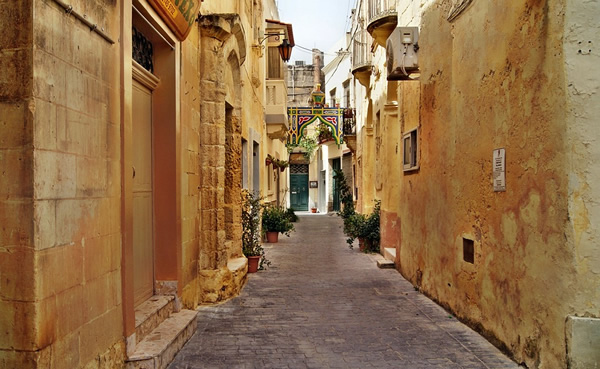
|
|
A backstreet in Valletta, Malta.
|
Cottonera Towns
Across the Grand Harbour from Valletta, the Three Cities — Vittoriosa, Senglea and Cospicua — are even older than Valletta and more atmospheric. They are encircled by the Cottonera Lines, a high and mighty defensive wall. Of them, only Vittoriosa has a few interesting sights. After seeing Vittoriosa, it is worth walking to two adjacent towns to see the local life at places that are off the commercial tourist circuit. One of these towns is Senglea. The entire town is full of character — narrow streets, baroque buildings, hole-in-the-wall local bars, and so on. And the town east of Vittoriosa, called Kalkara, is never visited by tourists and yet it has the most character of all towns in the Three Cities area: the town is built around a large bay, with the Catholic church towering over the shoreline, and it is a good place where you can observe an older and simpler form of Maltese town life. Sit down in one of the town's hole-in-the-wall cafes, where the baguettes or pastries are cheap and the coffee is served in glasses (as opposed to cups), and watch the goings-on: mothers strolling with their children on the seafront, men discussing all matters under the sun in the bar, men fishing off the promenade, young people furtively flirting or cruising in their decorated cars.
Zejtun
In the southeast of Malta, Zejtun is one of Malta's oldest towns — it was in fact one of the twelve parishes that existed by the fifteenth century. Yet it is firmly and unjustifiably off the tourist circuit, mostly due to the residual negative perception that lingers after political violence broke out in the eighties, when it was a stronghold of socialist militancy. The town's major attractions are its two churches. The present parish church is a mammoth built in the late seventeenth century, one of the largest churches in a country of large churches. It is a well-designed edifice, with towering bell-towers that feel like turrets, rising even above the dome, and a grand facade compositionally divided with staggered stone paneling. About fifteen minutes walk away, there is the old parish church, dedicated to St Gregory, a small church 1,000 years old — one of Malta's oldest churches — and very elegant with its imperfect cupola and thick stone walls and simple interior. You can take buses to Zejtun from Valletta, and then pick up a map of the town, which shows the historical features, from the office of the local council (street signs point the way to the council offices). For eating, you can have a very inexpensive meal at the local band club, which is the main square, the hangout of pensioners — it does simple dishes such as pasta, rice, steak and chips, bacon and chips, baguettes with various fillings, and so on. You will share the space with pensioners who hang around the band club, proudly holding their green finches in cages they carry with them everywhere.
Rural Gozo
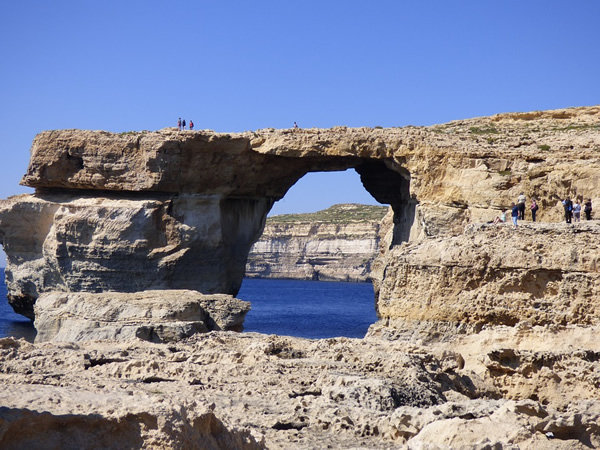
|
|
"Window" rock formation in Gozo.
|
The second largest island in the Maltese archipelago, Gozo is quieter and greener and the inhabitants still have a rural ethos. The coastline is varied and dramatic, presenting many opportunities for hiking, and the inland valleys are home to farmers — it is the outdoor activities, and rural experiences, that are the most attractive aspects of Gozo. In the summer you can kayak and explore the bays and gorges and cliff-faces that characterize the coast: best places to kayak (in both places you can find kayaks for rent) are in San Blas Bay (a scenic sandy beach where you can explore the clayey slopes, boulders stringing the coastline, and large bays that characterize the north coast) and in Xlendi (this is a bay cut into high cliffs, and on a kayak you can get out of the bay and explore the massive sea cliff that forms a large gulf and is pockmarked with large caves at the water level). In winter, you can go hiking along the coast: best stretches are from Ramla Bay to San Blas, Xwejni to Wied Il-Ghasri, and, on the south coast, Ta Cenc to Xlendi or Ta Cenc to Mgarr Ix-Xini. A longer route takes you from Kercem town to Ras Il-Wardija, which is at Gozo's southwestern tip. There are paths that skirt the coast, so you can simply arrive at your starting point, find the path and follow it to your finishing point.
The inland areas suggest a different rural tapestry, consisting of clusters of terraced fields stepping up or down deep winding valleys. The fields are interspersed copses of trees or outgrowths of bamboo. Walking through the valleys — it is permissible to walk through the fields for as long as you keep to the paths within the fields and not just trample on the crops — you will encounter farmers growing a variety of crops, or herding their sheep. You can also walk up the inland hills, which have flat-tops that offer varied panoramic views of the islands.
Gozo is small and you can walk everywhere and visit its towns, almost all of which have old centers that are charmingly set around the central town squares. For the best observations of local life — and for the really cheap deals — ignore the tourist-oriented cafes and restaurants, and instead settle for the hole-in-the-wall cafes, or the band club or football club of every town, normally situated in the town square, where you can drink Nescafe and eat baguettes or pastizzi (the hearty, pastries stuffed either with mashed peas or ricotta) with the loose change you will have in your pocket.
One thing to note is that you will encounter bird hunters when walking in rural areas in autumn and spring. The hunters are nervous about the presence of hikers, largely because they are aware of the repulsion that bird hunting causes; they also fear that hikers could be bird activists from Europe — every year, ecologists from northern Europe visit Malta to disrupt the hunters — so best is to greet them amiably and keep going, and to avoid taking pictures of them.
Comino
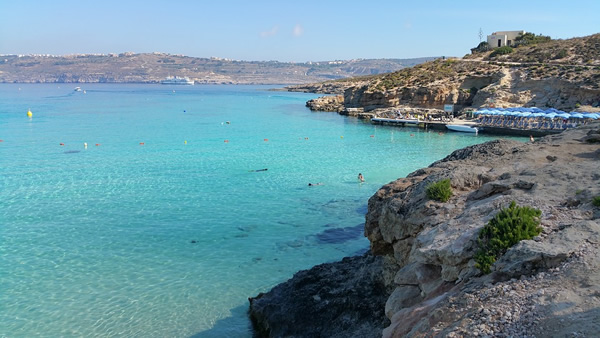
|
|
Comino Blue Lagoon.
|
Many people visit Comino in the summer for its Blue Lagoon — a stretch of azure water that gets so crowded with swimmers it is like a theme park by the sea. Most tourists come in boats in organized day-trips from Malta, but you can easily beat the crowds, especially if you visit outside the summer season. There are daily commuter boats to Comino from either Mgarr Harbour in Gozo or Cirkewwa in Malta, and the isle that looks barren from the sea is surprisingly rich in flora. The terrain consists of garigue, a habitat of hardy bushes that grow in pockets of soil in the rugged rocky surface, and in spring the garigue comes into glorious bloom, with the entire land tinged a psychedelic purple from the flowering wild thyme. Best in Comino is to walk around the coastline — a walk that would take about four hours — taking in the garigue, and the lonely vistas of the sea stretching to the horizon. Comino also has three charming historical sites scattered around its coast. Most impressive is St. Mary's Tower, the largest tower ever built in Malta looming over the seaside cliff on the south coast. On the east coast, there is the low-lying St. Mary's Battery, a semi-circular gun platform — still armed with its original cannons — that was designed to prevent enemy ships from finding safe anchor in the strip of sea that divides Comino and Malta. On the west coast, at Santa Marija Bay, there is a small fourteenth century chapel dedicated to Our Lady's Return from Egypt, a medieval veneration that's fitting in the chapel that looks like something out of a Western film, a small Christian outpost at the frontier. Santa Marija Bay also offers good swimming, and azure water, and yet it is largely overlooked as most tourists make a beeline for the more famous Blue Lagoon. If you do wish to swim at the Blue Lagoon and avoid the crowds, visit in the morning before 11 a.m.
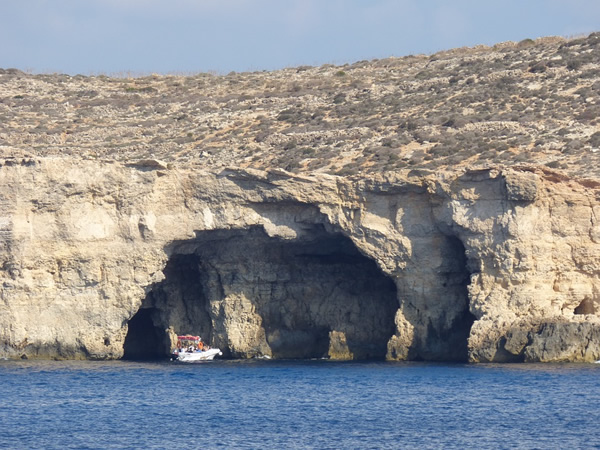
|
|
Cave near Comino.
|
Maltese Festivals
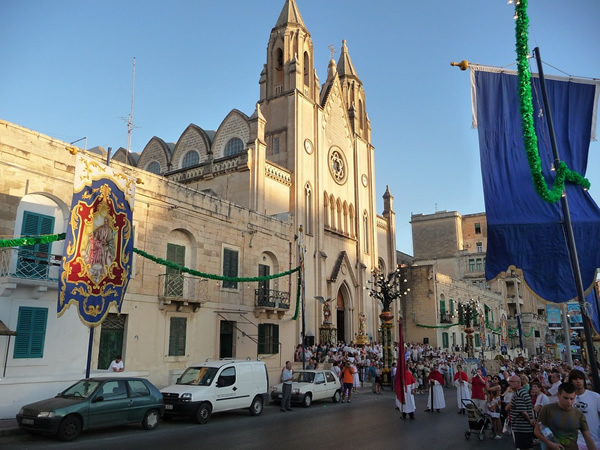
|
|
Sliema festival.
|
With a high degree of modernity, Maltese culture is only on display in distinct festivals that fall throughout the year. These are largely tied to the celebration of Catholic events — Malta's culture has been heavily influenced by the country's deep allegiance to Catholicism. Each town holds a feast annually; more than 80 are held between June and September, normally every weekend. These are 3-day community organized events in which the pomp and boisterousness of the Maltese spirit comes to the fore. The town is decorated with tapestries, statues of saints, strings of eclectic light bulbs, and the church is draped by light bulbs that light up the entire exterior. Brass bands lead processions through the streets, the church square fills up with revelers drinking and eating — especially drinking — and then inebriated dancing in the streets. All throughout, fireworks light up the sky — the fireworks are some of the best in the world. The best feasts are the ones in Lija and Mqabba for fireworks, San Gaetanu in Hamrun for street revelry, and the six different feasts in various towns throughout the islands on August 15, which is a national holiday.
Another colorful event is Holy Week. Throughout the week there is much pageantry, peaking on Good Friday when some towns hold re-enactments of biblical events. Penitents wear robes and hoods to be anonymous and carry wooden crosses through the streets of town (most colorful and largest re-enactments are in Zejtun in Malta and Xaghra in Gozo). Then, on Easter, some towns take out a statue of the Risen Christ and run through the town with the statue is a spirit of exhilaration and celebration (best run is held in Vittoriosa in Malta and Xaghra in Gozo).
Carnival also sees large-scale events lasting five days. There are official celebrations with floats, dances, and singing in several towns, but the best manifestation is the medieval-like carnival in the town of Nadur, Gozo. Here people do street performances that turn moral order on its head — the performances, which are highly creative and comical, seek to express issues of the day from the irreverent perspective of people who do not normally have a voice (the working classes). They often mock church figures, events of the time, and political leaders. Inside the bars, traditional bands play an assortment of traditional instruments, and the bars fill up with revelers drinking heavily and dancing wildly.
At Christmas, large and elaborate cribs, and other exhibitions, are held in many places throughout the islands, and churches are richly decorated. In Gozo many private houses also put exhibits behind their front window. These are rich and creative, with figures associated with the birth of Christ, and strings of colorful blinking lights.
For a schedule of events of the festivals mentioned above, including listings of all the feasts' dates, please see the Calendar of Events at the website of the Maltese tourist board.
Off-Season Travel in Malta
The majority of tourists visit the Maltese Islands in the summer high season. It is extremely hot in the summer, and the islands are more boisterous as the Maltese also work less and crowd the beaches en masse. But independent travel is harder in the summer heat and the tourist-crush at the main sights and beaches can be overwhelming; additionally, prices of hotels or guesthouses are highest in the summer, and the service in restaurants is busy and impersonal. You will get much more out of Malta if you visit in the shoulder or low seasons between October and May. It will be cheaper too: hotels or guesthouses slash their rates by up to 40% in the winter season. And travel is easier; the mild weather, even at the depth of winter, makes independent touring more pleasant. Still, the best time overall to visit is in spring. The only downside is that you will miss the pomp of the summer Catholic feasts, which are the most striking events in the annual cultural calendar.
Independent touring in Malta is easy; the bus network is extensive and cheap — it is inadequate in Gozo, but Gozo is small enough to be able to walk virtually everywhere. English is a co-official language, and virtually everything is in English — menus, street sighs, newspapers, and so on. By traveling in Malta independently, you can spend less money and see more of Malta. If you have time to spare, check out the events and listings that are listed in Malta's newspapers, particularly The Malta Independent and The Malta Times, and you will find plenty of free cultural events and happenings that you can attend.
One of the ironies in Malta — and a delight for any independent traveler — is that the cheapest accommodation is often found in the most characteristic places, particularly in Valletta This is because the modern 5-star hotels are almost all found in the newer parts of Malta in Sliema and St. Julian's and other beach-bound parts of the island, a consequence of the drive in the sixties and seventies to build a tourist industry focused on sun and sea. There are two small hotels in Valletta that are in good locations and relatively cheap — best of these is the Grand Harbour Hotel, situated St. Ursula Street. A cheaper option is the hostel run by the YMCA (in Merchant Street), situated in a multi-storey townhouse that oozes old world charm — each bed has three bunk beds, each costing about $10-15 daily, but low occupancy often means that you will have the room to yourself. Valletta is the best place to be based as the main bus station is there, and buses from Valletta fan out to all parts of Malta — additionally, Valletta is of course Malta's most impressive town, and the capital, a World Heritage Site in its entirety.
In Gozo, the best value for money is found in Marsalforn, which offers a handful of inexpensive guesthouses. Marsalforn is Gozo's largest seaside town and the second-busiest part of Gozo after the capital Rabat. Another possibility is to rent an apartment, which can work out cheaper if you are staying for a week or more. Rental apartments are scattered throughout the island and leased directly from the owners. You can get an entire list of apartments for short-term rental, including contact details, from the tourist office in Republic Street, Rabat, situated adjacent to the police station in Rabat. You can also get further info about places to stay, and all kinds of practical details about travel in Gozo, at VisitGozo.com.
Victor Paul Borg is the author of four guidebooks to Malta & Gozo. He's originally Maltese, but he has lived in East Asia for much of the last 10 years, where he writes for a variety of publications.
|
